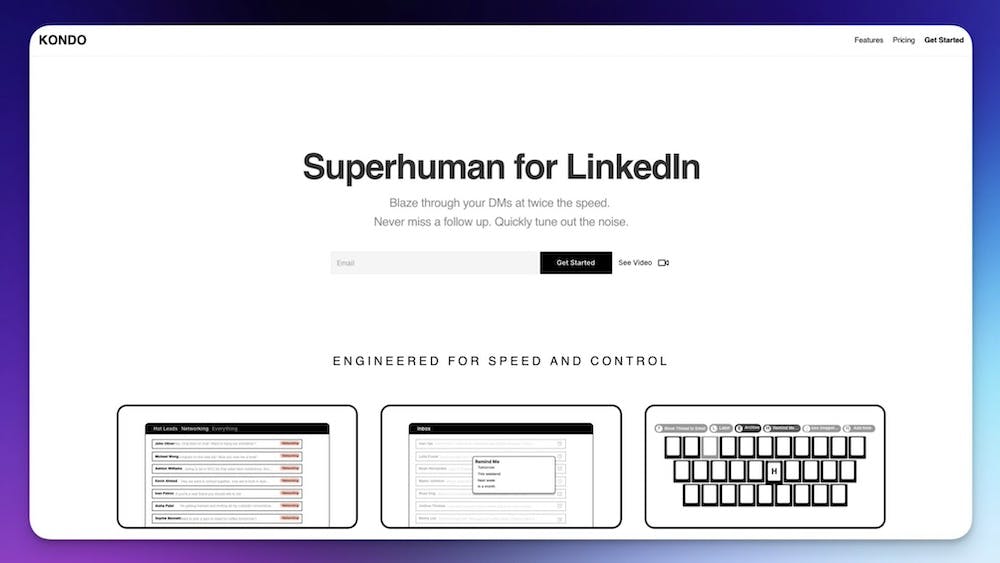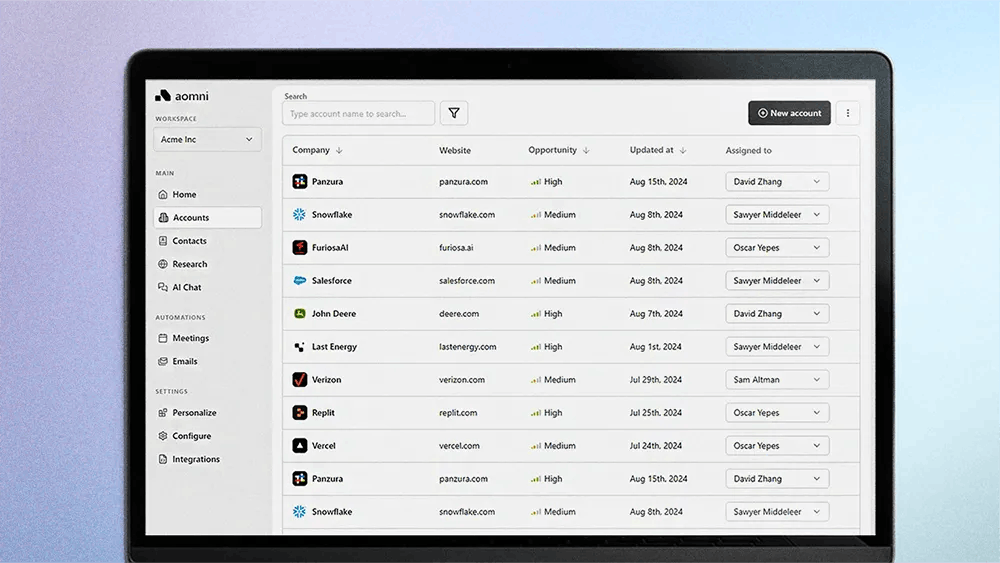The gap between what a serious business professional needs for outreach or networking on LinkedIn and what the platform actually offers has grown immensely. LinkedIn hasn’t kept up—and that’s the gap Kondo is working to fill.
LinkedIn has quietly become one of the most powerful platforms for business communication—but its messaging system is still plagued with poor UX, stuck in a consumer social media messenger framework. With deals on the line, LinkedIn users have asked for improvements to their inbox to no avail. Seeing the potential, and tired of waiting for the solutions they wanted to see, one company has stepped in to disrupt LinkedIn’s outdated chat.
Here to do business: "LinkedIn chat is built more like Facebook Messenger or Instagram DMs," says Mitchell Tan, Co-Founder of Kondo, a solution focused on improving LinkedIn message management that bills itself as "Superhuman for LinkedIn". "But the big difference is that people actually make a ton of money on LinkedIn." Tan points to the platform’s high-value user base—citing figures that peg the average LinkedIn user's median income around $70,000—as a key indicator of its commercial potential. "People are here to make money. They can buy things," he says. But the problem at hand is they're difficult to reach.
Better, faster, more productive: "The gap between what a serious business professional needs for outreach or networking on LinkedIn and what the platform actually offers has grown immensely. LinkedIn hasn’t kept up—and that’s the gap Kondo is working to fill." Kondo’s solution brings familiar productivity tools like labels, templates, and reminders to LinkedIn messaging. “Whatever you can do in Gmail, you should be able to do in LinkedIn messages," Tan explains. "And we think we do it even better—faster, more productively."
Cold emails are in the gutter. Unless it’s someone you know or a very well-crafted note, people aren’t responding anymore.
In the gutter: According to Tan, email—long the staple of professional outreach—is losing its edge. Spam, automation, and overuse have eroded trust and effectiveness. "Cold emails are in the gutter," he says. "Unless it’s someone you know or a very well-crafted note, people aren’t responding anymore." By contrast, Tan sees LinkedIn emerging as the new frontline for business networking. "It’s not just a social network. It’s becoming a more important messaging channel for cold-to-warm business interactions than email itself."
Trust filters: Part of LinkedIn’s strength, Tan says, lies in its inherent trust filters. Before responding to a message, users typically review the sender’s profile—checking work history, mutual connections, and credibility signals. "That’s why top-quartile LinkedIn outreach can get 50% reply rates," Tan notes. "Compare that to cold email, which might get 0.5%."
Rolodex building: Still, Tan is cautious about how far automation should go. While AI can assist in outreach, he questions whether we want it to handle relationship-building. "If you’re messaging a VP of Sales about a $30,000 piece of software, do you want a bot to do that? Or do you want to know the person on the other side?"
For Tan, it’s not just about capability—it’s about intent. "AI might be able to build your Rolodex. But would you want it to?" As LinkedIn becomes more central to how business gets done, Tan sees a future where tools like Kondo help bridge the gap between scale and authenticity—giving professionals the systems they need without sacrificing the relationships that matter.





